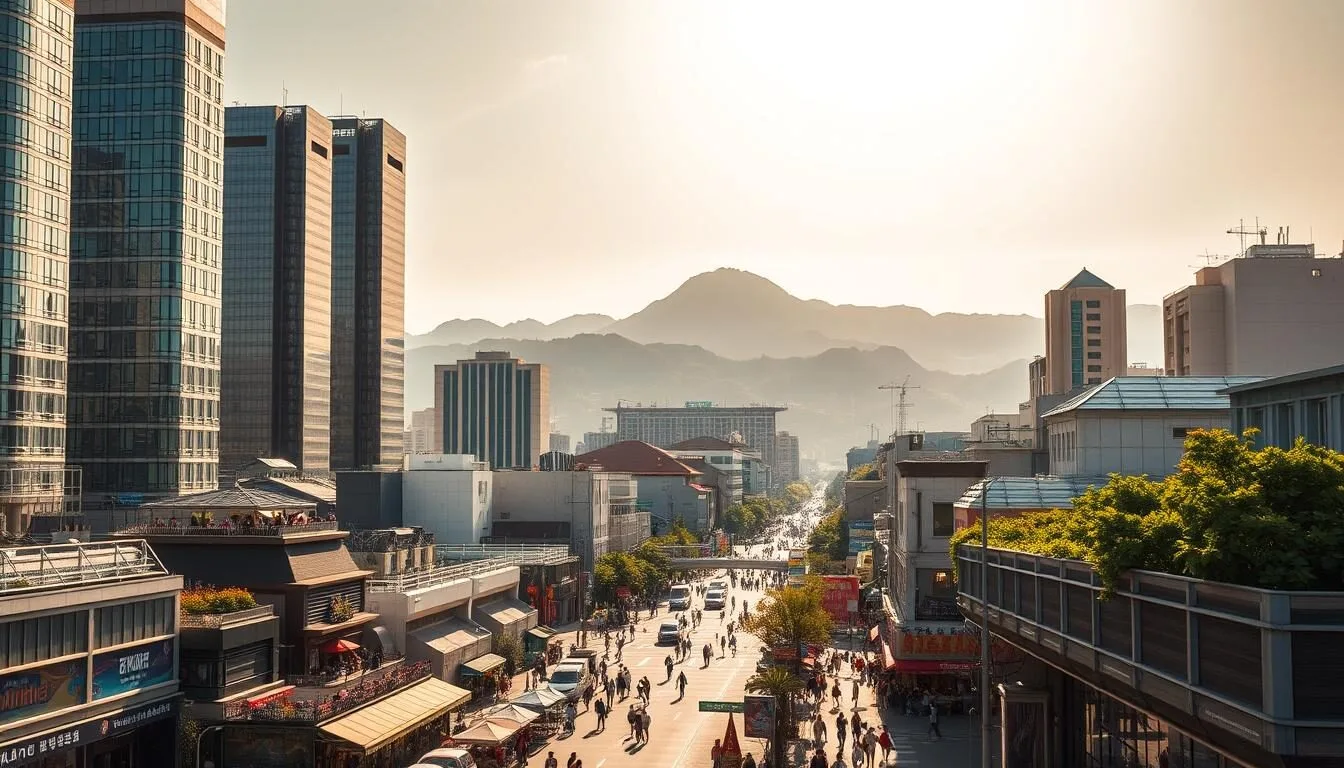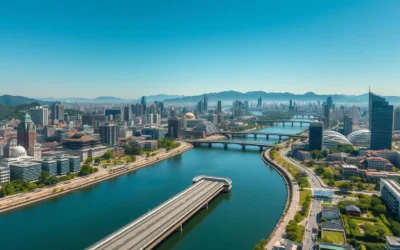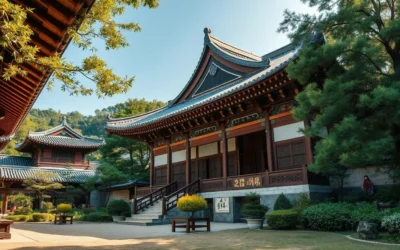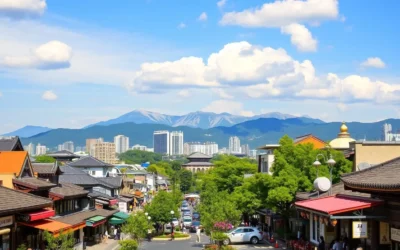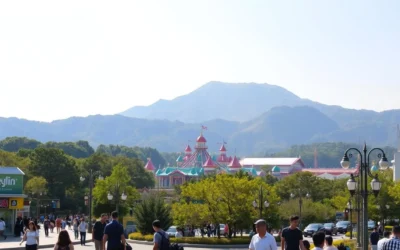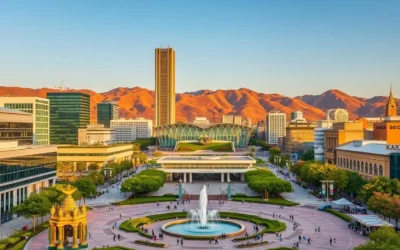✓ Accommodations✓ Flights✓ Rental Cars
You might be surprised to know that Ulsan is home to some of the most breathtaking natural landscapes and modern industrial marvels in South Korea.
This vibrant city offers a unique blend of coastal parks, bamboo groves, and cultural villages that cater to diverse interests.
As you explore Ulsan’s top attractions, you’ll discover why it’s becoming a must-visit destination in South Korea. From scenic coastal views to historical sites, Ulsan has something for everyone.
Whether you’re a nature lover, history buff, or simply looking for a new adventure, Ulsan’s best things to do will make your trip memorable.
Discovering Ulsan: South Korea’s Industrial Powerhouse with Natural Beauty
As you travel down South Korea’s southeastern coast, you’ll discover the industrial powerhouse of Ulsan. Ulsan is an industrial city with a unique blend of heavy industry and natural landscapes.
A Brief Introduction to Ulsan
Ulsan is located about 70 kilometers north of Busan, making it easily accessible for travelers. With around one million inhabitants, it’s the country’s seventh-largest city but boasts the highest per capita income due to its large industrial plants, including major oil refineries and fertilizer factories. Ulsan is also home to the world’s largest single industrial plant, Hyundai Industries, where cars and large container ships are built.
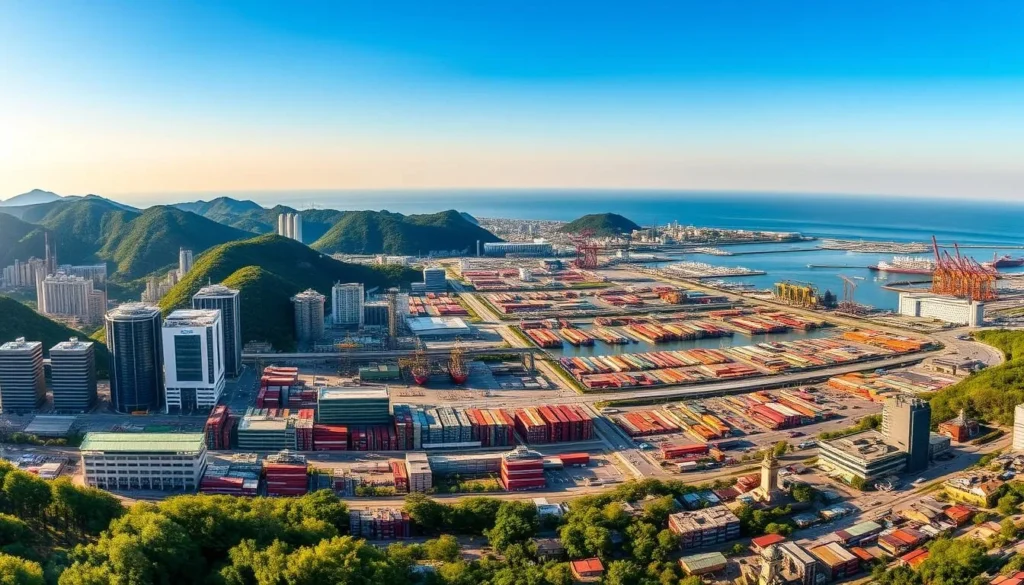
Why Ulsan Deserves a Spot on Your South Korea Itinerary
Ulsan deserves a spot on your itinerary because it offers a unique blend of industrial tourism and natural beauty. The city has transformed from a heavily industrialized area to a place that balances industry with nature conservation. You can explore its economic significance, visit major industrial complexes, and enjoy the natural landscapes that surround the city.
| Aspect | Description |
|---|---|
| Industrial Significance | Home to the world’s largest automobile manufacturing plant and shipyard |
| Natural Beauty | Balances industry with nature conservation efforts |
| Economic Importance | Highest per capita income in South Korea |
Daewangam Park: Coastal Beauty and Dragon Legends
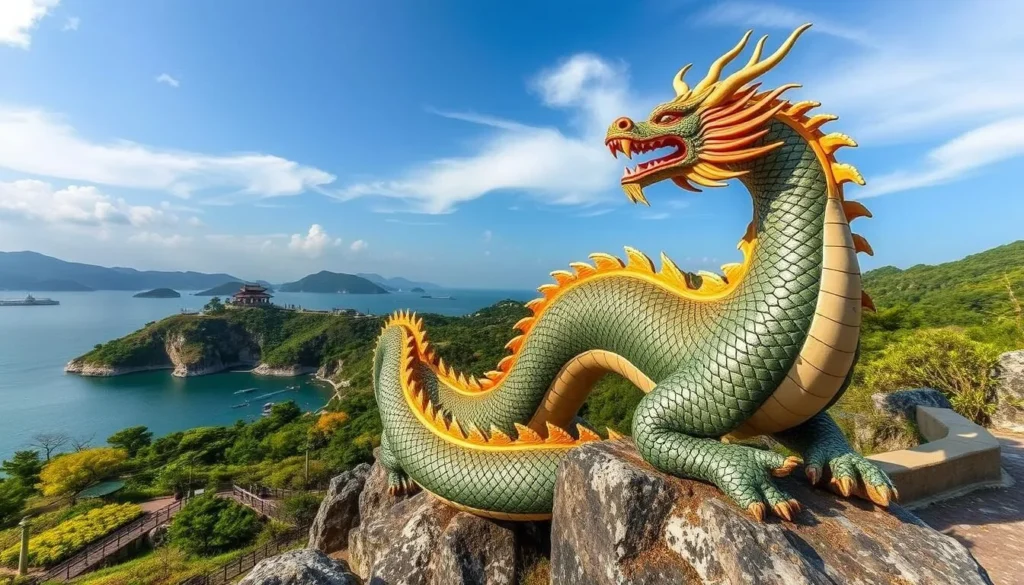
Daewangam Park, a gem on Ulsan’s coast, is renowned for its picturesque views, walking trails, and the legendary Dragon Queen. This scenic headland pushes into the East Sea, featuring dramatic rocky outcrops and a historic lighthouse.
The Legend of the Dragon Queen
The park is steeped in legend, particularly the story of the Dragon Queen, believed to be the wife of King Munmu of Silla. According to myth, she transformed into a dragon to protect Korea’s eastern coast after being lost at sea.
Scenic Walking Trails and the Suspension Bridge
Visitors can enjoy a leisurely walk along the 600-meter trail that winds through century-old pine forests, flowering trees, and seasonal blooms. The trail culminates at a suspension bridge connecting the mainland to Daewangam Rock, offering spectacular panoramic views of the sea.
Taehwagang River Grand Park: Ulsan’s Green Oasis
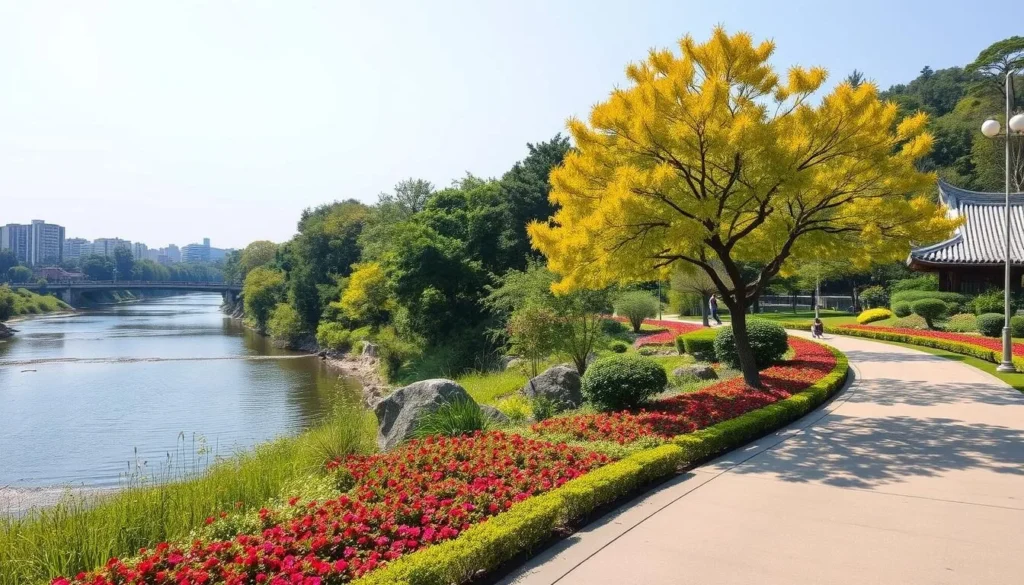
Nestled along the Taehwa River, Taehwagang River Grand Park is a haven for nature enthusiasts. This expansive park is a paradise for those looking to escape the city’s industrial landscape and immerse themselves in natural beauty.
The Famous Simni Bamboo Grove
One of the park’s main attractions is the Simni Bamboo Grove, a dense 4-kilometer stretch of bamboo forest planted during the Japanese colonial period. This grove has become one of Ulsan’s most photogenic spots, offering a serene and picturesque environment for visitors.
Seasonal Flower Festivals and Activities
The park is also renowned for its seasonal flower festivals, featuring a variety of flowers such as poppies, cornflowers, and golden coreopsis. Visitors can enjoy leisurely picnics by the river, explore the walking trails, and participate in the various recreational activities available throughout the year.
Taehwagang River Grand Park is not just a beautiful green space; it’s also a testament to Ulsan’s environmental conservation efforts. The park’s transformation into a thriving natural sanctuary is a stark contrast to the city’s industrial image, making it a must-visit destination.
Ilsan Beach: Ulsan’s Premier Coastal Getaway
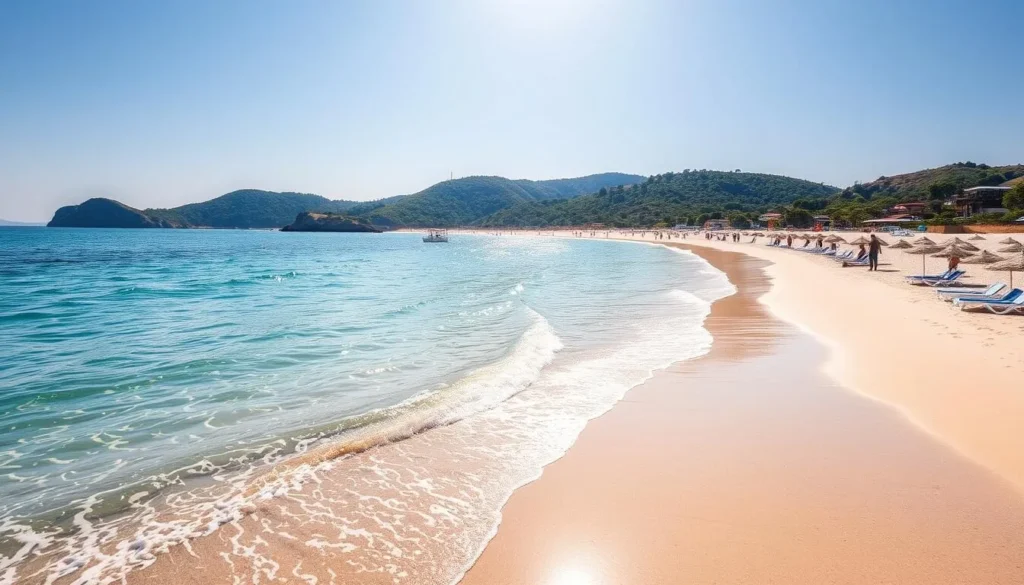
Ilsan Beach is a must-visit destination in Ulsan, offering a serene escape from the city’s industrial landscape. This beautiful beach is known for its clear waters and soft sands, making it an excellent spot for swimming, sunbathing, and enjoying a beachside BBQ with family and friends.
Beach Facilities and Activities
Ilsan Beach offers a range of facilities to ensure a comfortable day at the beach. You can enjoy various activities, including swimming and sunbathing, or take advantage of the nearby shops, restaurants, and rental services. The beach is approximately 600 meters long, with shallow waters that are perfect for families with children.
Summer Festivals and Events
During the summer months, Ilsan Beach hosts exciting festivals and events, including volleyball tournaments, live music performances, and spectacular fireworks displays at the end of July. These events add to the beach’s lively atmosphere, making it a great time to visit and experience the local culture.
Jangsaengpo Whale Culture Village: Exploring Korea’s Whaling History
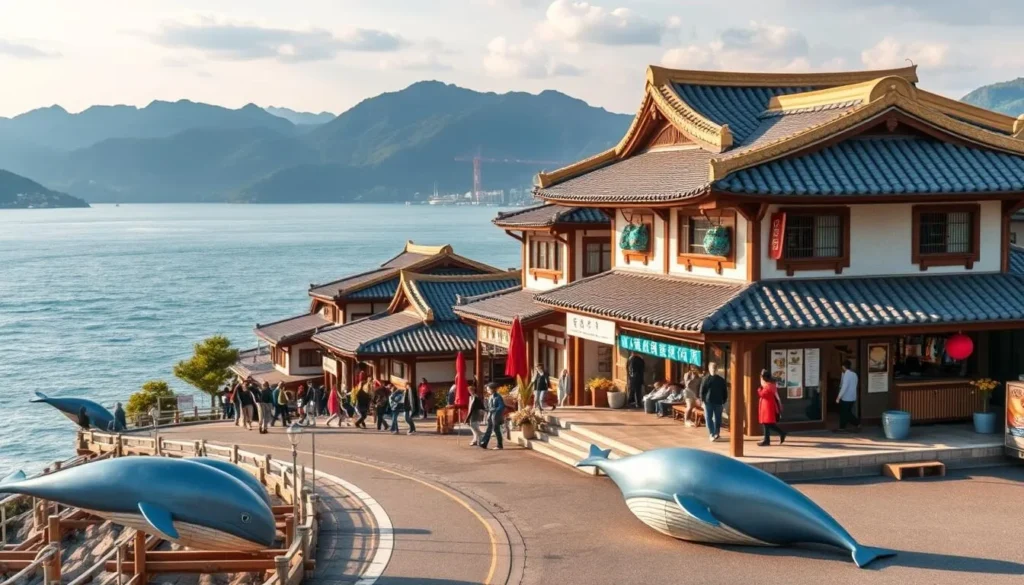
The Jangsaengpo Whale Culture Village is a cultural complex that preserves and showcases Korea’s whaling history from the 1890s until the commercial whaling ban in 1986. This unique destination offers a glimpse into the lives of the people who lived and worked in Jangsaengpo, once the Korean Peninsula’s top whaling port.
The Whale Museum Experience
At the heart of the village is the Jangsaengpo Whale Museum, the only attraction of its kind in South Korea. The museum features rare artifacts from the whaling industry, including harpoons, whale products, models, and complete whale skeletons. Visitors can learn about the history of whaling in Korea and its significance in the region.
Whale Watching Cruises
For a chance to spot minke whales, gray whales, and pods of common dolphins, embark on a whale-watching cruise from April to October. The best viewing opportunities are from April to June, making it an ideal time to visit.
Ulsan’s Industrial Tourism: Where Manufacturing Meets Marvels
As a major industrial hub, Ulsan offers a unique tourism experience that combines cutting-edge manufacturing with breathtaking views. You can explore the city’s industrial might and discover how it coexists with natural beauty.
Hyundai Motors Plant Tour
You can book a tour of the Hyundai Motors Ulsan Plant, recognized as the world’s largest automobile manufacturing facility. With five massive factories employing around 32,000 people, the plant produces an average of 5,800 vehicles daily. The scale is awe-inspiring, with a testing station the size of 100 football fields and a dock that can handle three 76,000-ton container ships simultaneously. Notably, the plant has been made greener by the planting of around 600,000 trees.

Ulsan Bridge Observatory
For a panoramic view of the Ulsan Industrial Complex, visit the Ulsan Bridge Observatory. Located on Muryongsan mountain, it offers stunning views of the Ulsan Harbor Bridge and the coastline, particularly spectacular after sunset. You can also hike the trails around Muryongsan to discover several wooden lookouts.

Ulsan’s industrial tourism is not just about the scale of its manufacturing; it’s also about the harmony between industry and nature. You can experience this unique blend by visiting the Hyundai Motors Plant and the Ulsan Bridge Observatory, showcasing the city’s industrial prowess and natural beauty.
- Experience Ulsan’s industrial tourism offerings that highlight the city’s role as South Korea’s manufacturing powerhouse.
- Tour the Hyundai Motors Ulsan Plant, the world’s largest automobile manufacturing facility.
- Visit the Ulsan Bridge Observatory for panoramic views of the industrial complex and coastline.
- Appreciate the environmental efforts at the industrial sites, such as the trees planted at the Hyundai plant.
Ulsan Grand Park: Recreation and Relaxation
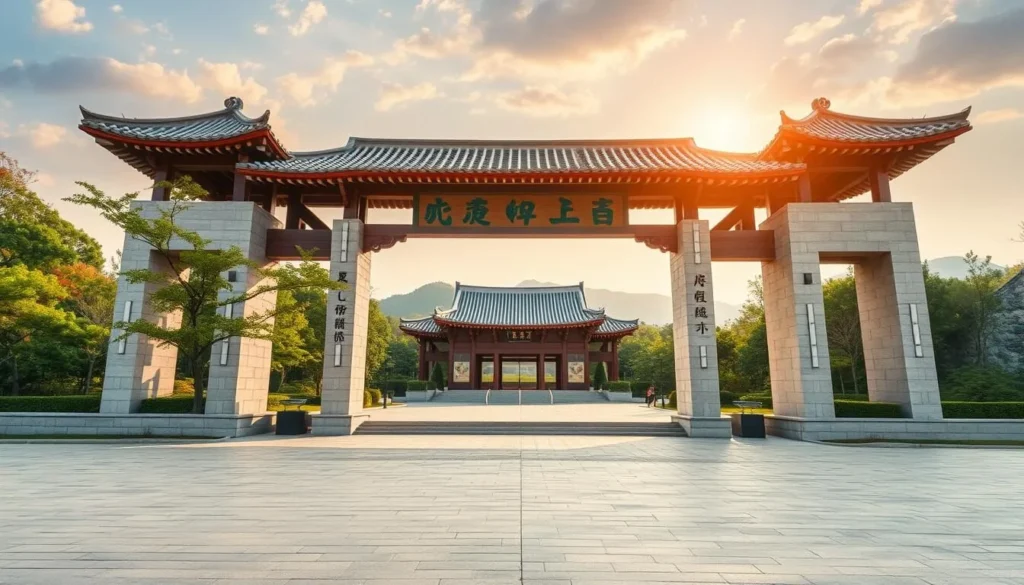
Established in 2006, Ulsan Grand Park has become a beloved recreational spot for locals and tourists alike. Spanning 369 hectares, this ecological park on the west side of Nam-gu offers a tranquil escape from the city’s hustle and bustle.
Family-Friendly Activities
The park is a haven for families, with a range of activities that cater to all ages. You can enjoy a day at the water park, relax by the swimming pool, or explore the petting zoo. For the more adventurous, there’s a trampoline park and a nine-hole pitch and putt golf course. You can also take a leisurely bike ride around the park’s extensive grounds, using the free bike rental service available at all main entrances.
Seasonal Events and Festivals
Ulsan Grand Park hosts a variety of seasonal events and festivals throughout the year. The highlight is the Rose Festival in May, which features a spectacular light show in the evenings. You can also participate in other activities and events, making the most of your visit to this vibrant park.
Ulsan Museum: Dive into Local History and Culture

As a cultural hub, the Ulsan Museum showcases the rich heritage of Ulsan through its diverse exhibits. This free museum, opened in 2011 beside Ulsan Grand Park, is housed in a striking modern building hemmed by reflecting pools. The museum’s main exhibition provides a compelling chronology of Ulsan’s history, featuring a wide range of artifacts that tell the story of the region’s cultural evolution.
Key Exhibits and Collections
The museum’s main exhibition is a journey through Ulsan’s history, from prehistoric times to its modern industrial development. You can explore fascinating artifacts including prehistoric handaxes, temple bells, maps, ceramics, ritual implements, weapons, and armor. The exhibits also delve into Ulsan’s industrial heritage, showcasing whaling, shipbuilding, and automotive manufacturing, including the 1975 Hyundai Pony, South Korea’s first mass-produced car.
Special Exhibitions and Programs
The Ulsan Museum also hosts special exhibitions and educational programs, featuring world-class collections such as Ancient Egyptian artifacts and Thomas Edison’s inventions. These temporary exhibitions make the museum a dynamic cultural hub, offering something new and exciting for repeat visitors. By participating in these programs, you can gain a deeper understanding of not just Ulsan’s history, but also its place in the global cultural landscape.
Hiking in the Yeongnam Alps: Ulsan’s Natural Playground
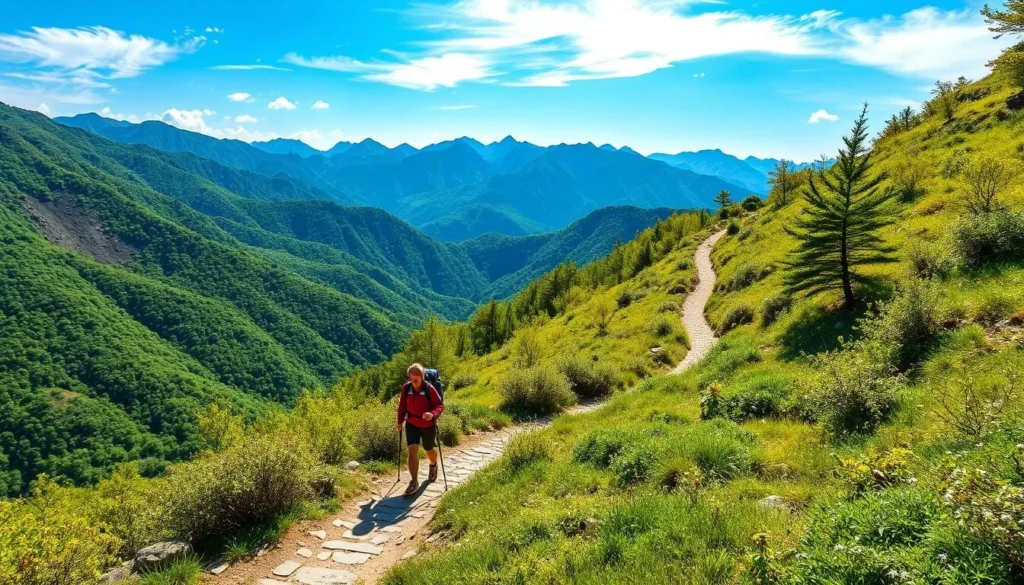
Ulsan’s natural playground, the Yeongnam Alps, is perfect for those who love walking and exploring trails. The mountain range features nine peaks over 1,000 meters, offering a unique hiking experience.
Mount Gajisan and Seoknamsa Temple
One of the highlights of the Yeongnam Alps is Mount Gajisan, a 1,241-meter peak with well-marked trails that lead you through evergreen forests to a craggy, wind-swept limestone summit. At the base of Gajisan lies the historic Seoknamsa Temple, dating back to the 9th century.
Sinbulsan and the Flame Grass Road
Another must-visit is Sinbulsan and its famous Flame Grass Road, a ridge trail that takes you through luminous fields of swaying flame grass. The trail is particularly beautiful in late summer and autumn when the grass catches the sunlight.
The Yeongnam Alps offer a great hiking experience with its thoughtful trail infrastructure, including wooden boardwalks and stairways that protect the delicate ecosystem while making the hike more accessible.
Cultural Experiences Around Ulsan
Explore the cultural gems of Ulsan, from traditional pottery villages to local rice wine producers. Ulsan is a treasure trove of cultural experiences that offer a glimpse into traditional Korean crafts and culinary arts.
Oegosan Onggi Village
Oegosan Onggi Village is a must-visit destination for anyone interested in traditional Korean pottery. With a history dating back 5,000 years, onggi pottery has been a staple in Korean culture, used for various purposes such as fermenting kimchi and storing gochujang. The village produces more than half of Korea’s traditional earthenware, including the world’s largest onggi pot, as certified by Guinness.
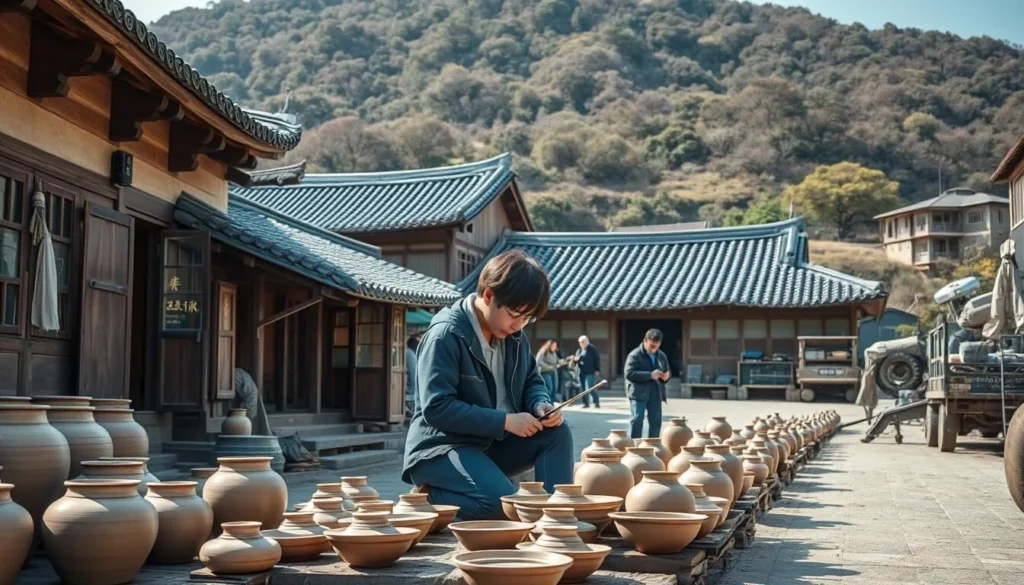
Boksoondoga
Boksoondoga is an organic winery that produces traditional Korean rice wine, makgeolli, using locally harvested rice and handmade onggi vessels for fermentation. On a trip to the Yeongnam Alps, stop by Sangbuk-myeon to taste this unique kind of rice wine, which has a cloudy appearance and a fizz from its fermentation process.
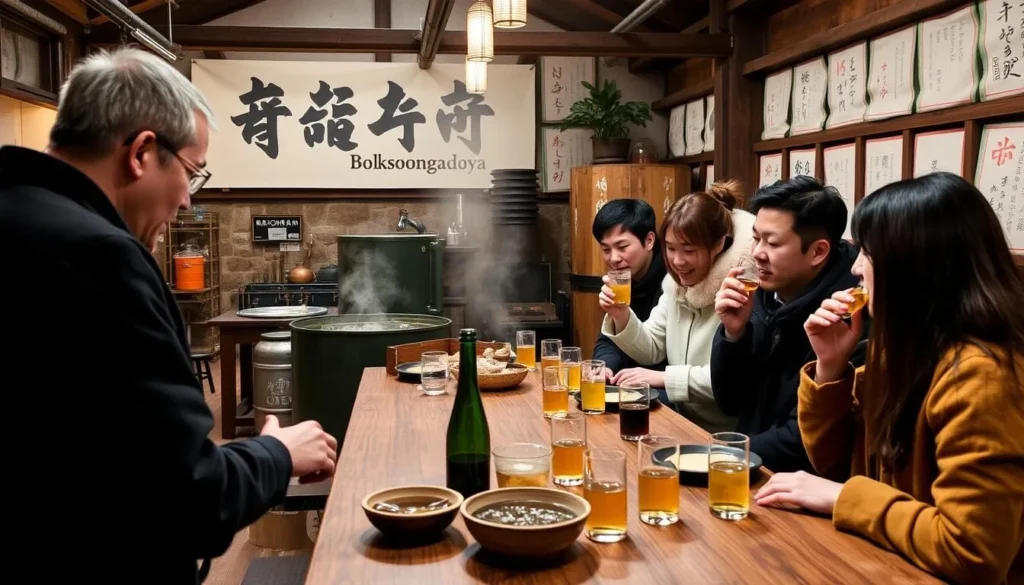
Plan your trip to Ulsan to coincide with the four-day Onggi Festival in October, where you can watch live pottery demonstrations, make your own onggi, and purchase authentic pieces at significant discounts. This is a unique opportunity to experience the rich cultural heritage of Ulsan in just one day.
Day Trips from Ulsan: Exploring Nearby Attractions
The area around Ulsan is full of hidden gems, waiting to be discovered on a day trip. You can explore the region’s diverse natural beauty and cultural significance by visiting nearby attractions.
Ganjeolgot Cape: Korea’s First Sunrise
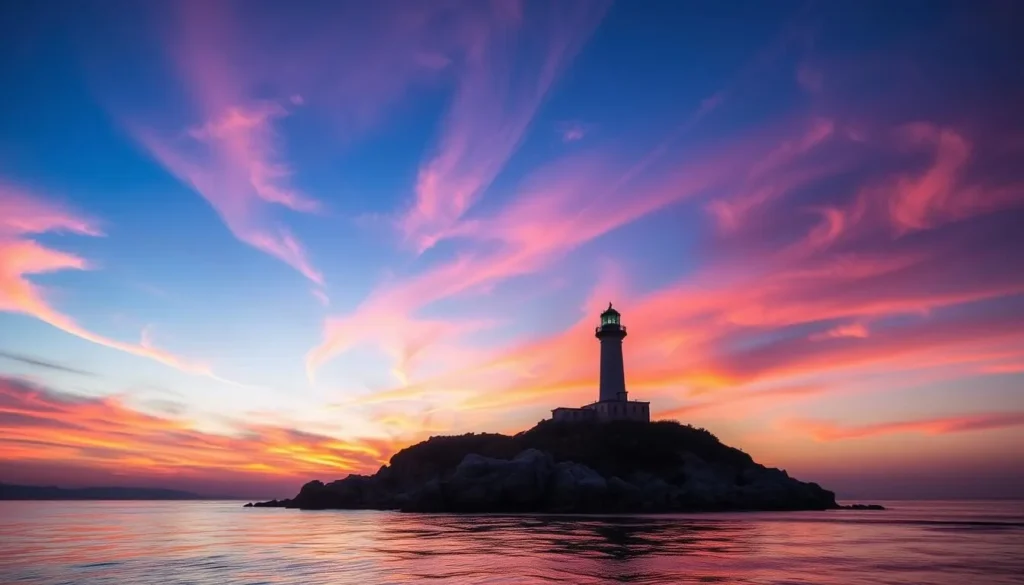
Ganjeolgot Cape is famous for being the first place in Korea to see the sunrise. The cape features a lighthouse, a scenic boardwalk, and the Drama House café, which was once a set for a Korean TV show. Visitors can write their wishes on postcards and put them in the second-largest post box in the world.
Paraeso Falls: Natural Beauty in the Mountains
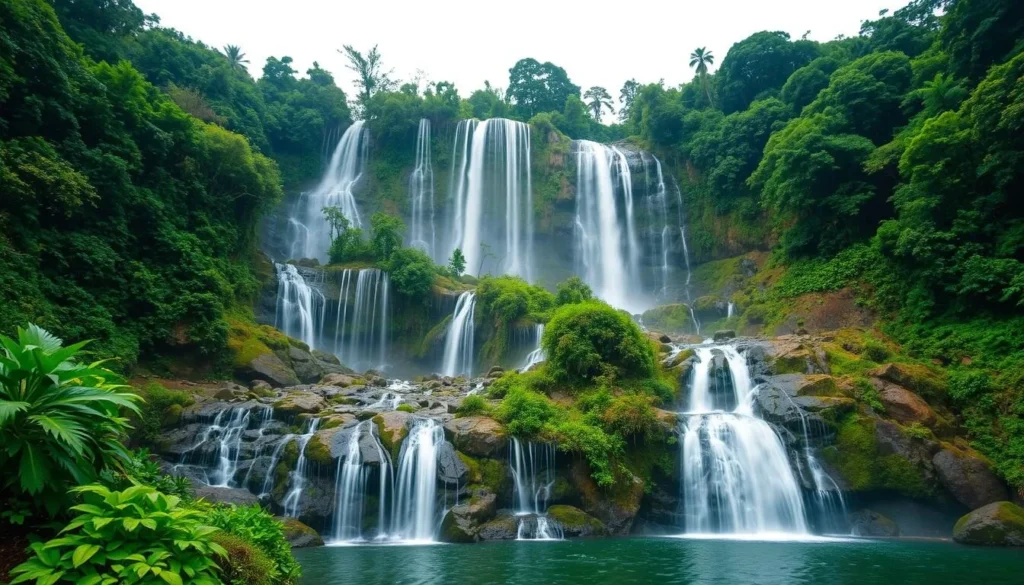
Paraeso Falls is a waterfall located just 40 minutes from Ulsan, recognized as one of the “12 Scenic Sights of Ulsan” by the local tourism board. You can enjoy a 1.5-kilometer riverside trail rich with wildlife, including birds and chipmunks, and experience the natural splendor of the falls.
These day trips from Ulsan offer a great way to explore the region’s diverse attractions and create lasting memories.
Practical Travel Tips for Visiting Ulsan
Before you embark on your journey to Ulsan, here are some practical tips to ensure a smooth and enjoyable trip. Planning ahead can make a significant difference in your travel experience, allowing you to focus on enjoying the top things to do in this vibrant city.
Getting to and Around Ulsan
Ulsan is well-connected by train and bus, making it easily accessible from major cities like Seoul and Busan. While Ulsan has connections to the KTX express train network, the train station is about 24 kilometers west of the city center. For most destinations, taking the bus is a more convenient option. Within Ulsan, the public bus system is efficient and comprehensive, covering all major attractions. However, it’s crucial to plan your travel time, as distances between places of interest can be significant, sometimes taking up to an hour across the city.
Best Time to Visit and Where to Stay
The best time to visit Ulsan depends on your interests. Spring is ideal for enjoying the flower festivals at Taehwagang River Grand Park, while summer is perfect for beach activities at Ilsan Beach. Autumn brings the beautiful flame grass at Sinbulsan. For accommodation, consider staying in central locations like near Taehwagang River for easy access to multiple attractions. You can choose from a variety of options, including business hotels like Toyoko and more traditional Korean accommodations, making your trip to Ulsan memorable.
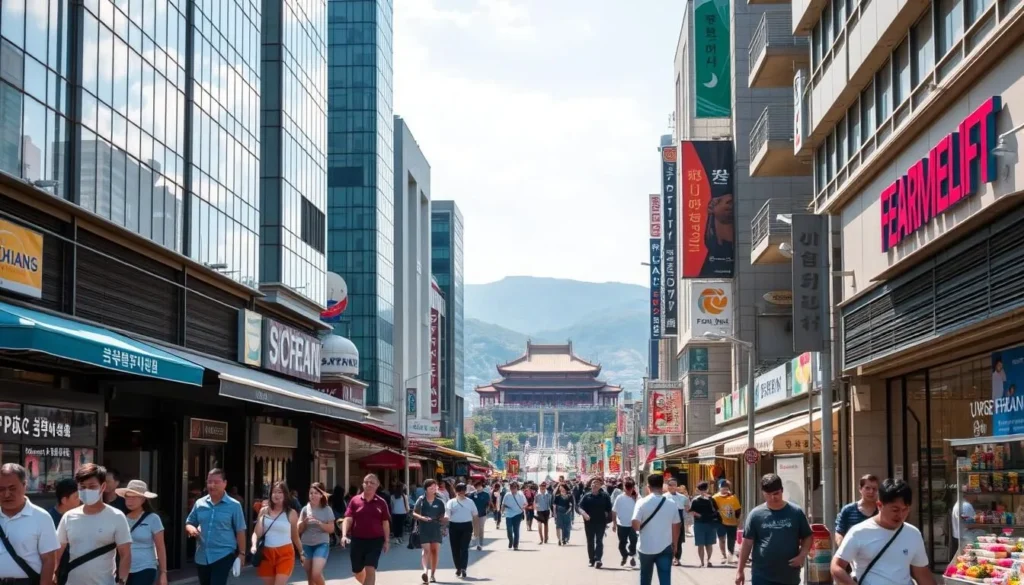
Conclusion: Why Ulsan Should Be on Your South Korea Itinerary
Ulsan, a city that seamlessly blends industrial prowess with natural beauty, is a hidden gem waiting to be discovered. You might have never heard of Ulsan, but this underrated destination offers a perfect balance of industrial marvels, natural beauty, and cultural experiences.
As you explore Ulsan, you’ll appreciate its unique position as both an industrial powerhouse, home to the world’s largest single industrial plant, and a city with stunning natural landscapes, including coastal parks, bamboo groves, and mountain trails. The city’s transformation from a whaling center to a modern industrial hub is a testament to its ability to preserve history while embracing environmental conservation.
By including Ulsan in your South Korea travel itinerary, you’ll experience contemporary South Korean life away from the more tourist-heavy destinations. You can discover the surprising things this dynamic city has to offer beyond its industrial reputation, making it a worthwhile visit to places that are off the beaten path.
The above is subject to change.
Check back often to TRAVEL.COM for the latest travel tips and deals.
